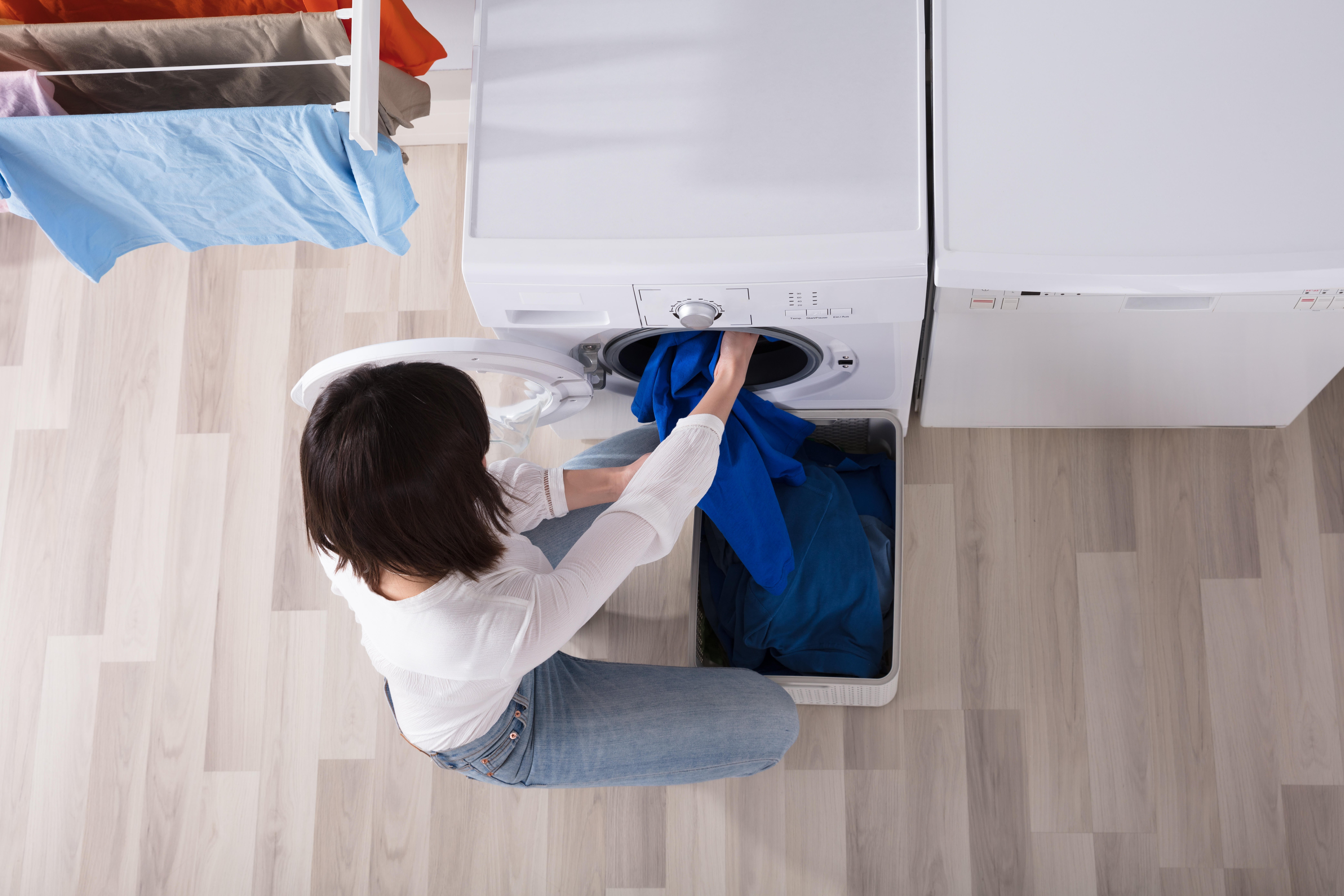
Support truly
independent journalism
Our mission is to deliver unbiased, fact-based reporting that holds power to account and exposes the truth.
Whether $5 or $50, every contribution counts.
Support us to deliver journalism without an agenda.

Louise Thomas
Editor
Lily Allen has revealed on a recent episode of BBC Sounds Miss Me? podcast that she doesn’t know how to use a washing machine.
The 39-year-old English singer-songwriter asked best friend Miquita Oliver – who she co-hosts the twice-weekly podcast with – if she would like to hear a secret and said: “I don’t know how to use a washing machine. I just have this fear of shrinking and dyeing clothes, so David and the kids do the washing.
“I’ll iron stuff… [but] I don’t even really like putting things in the dryer. I’m scared. I get so angry when people make a nice white t-shirt pink. I’ve heard the horror stories which is why I’m not going there. My ADHD and a washing machine and fabric conditioner are not going to go well together.”
Are you using your washing machine correctly? Experts share all the things you should know.
Is it bad to mix whites and colours?
Separate your clothes into appropriate piles said David Rees, an appliances expert from HomeSupply.
“You should not mix colours together, as there is a chance that the colours could bleed and damage your clothes. It is best to separate clothes into lights, darks, whites and delicates, and you can also wash towels and bedding separately,” he said.
“It may also be beneficial to buy laundry bags for delicate items like underwear or tights, as washing them in these bags stops them from being torn or ripped.”
Understand the symbols
Katy Roberts, a washing machine expert at AO.com, shared that each washing machine will have a wheel of symbols that list each different programme.
“These programmes are basically designed to handle clothes of each different fabric type. If you’re unsure of which fabric your clothes are made from, you can check this by looking at the washing tag on the item,” she said.
“Using a washing machine is straightforward once you understand the basic symbols and settings. Don’t hesitate to refer to the machine’s manual or ask someone for help initially. With practice, you’ll become more confident in using it effectively!”

How do I know what spin speed to use?
For David Palmer, home appliance senior product specialist at LG Electronics, if you know you’re going to be using your tumble dryer, choose a faster spin on your washing machine first.
“This will help to remove excess water so your tumble dryer can dry your clothes faster. Just be sure the spin speed is suited to the type of clothes you’re washing,” he said.
“For delicate fabrics, choose specialised programs like hand wash and wool cycles. These cycles use minimal drum movement, allowing clothes to soak gently in water, preventing damage or matting.
“If you’re not using a dryer, slow down the spin speed of your washing machine to at least 800rpm to reduce creases and help you cut down on ironing time. Once the cycle has finished, shake the clothes out.”
What do you wash in the highest temperatures?
According to Roberts, which temperature to use is another tricky choice for many.
“Yet to simplify this, try to wash your clothes at 30 degrees when you can, as this is kinder to your delicate fabrics and it can save you money compared to a hotter wash. You can also choose to run a lower spin speed if you’re looking to be more gentle to your clothes,” she said.
Palmer added: “Save your hot washes for the items that matter most, for example, bedding, towels and sportswear, as these items are most likely to host a multitude of bacteria.”

Can you just wash everything on a cold wash to help the environment?
There are various ways that washing machines can help the environment.
“The Energy Saving Trust said ‘wet appliances’ like washing machines account for around 10% of a typical household’s energy bills. So, an easy way to lower this is by reducing the wash temperature to 20/30 degrees for longer durations, which is when your washing machine is the most energy efficient,” said Palmer.
“There is no need for a super-hot wash, even stained items can be washed at cooler temperatures.”
Be cost effective
According to Palmer, energy prices are at their lowest between 10pm-5am, therefore, for the night owls and early risers, this is the best time to use your machines.

“Whilst it is more cost-effective to fill up your machine, don’t be tempted to overfill your appliance as this will mean the motor has to work more and cause excess heat, which could damage the appliance in the long-term,” he added.
“The best way to fill a washing machine is item by item, don’t just dump the washing basket right in! It helps the wash performance and means there are no unwanted guests like pens or phones your children may have forgotten.
“The simple test to check if you’re at optimum capacity is to place your hand on the top of the drum, if you can freely move your hand, you’re good to go!
What is the best setting to use if you are trying to get stains out?
It really depends on your washing machine type and the settings you have available.
“Read up on the features available before making your purchase on a new machine. Heavy stain removal may be important for you, for example, if you have children. Steam technology washing machines can get deeper into the fabrics and remove those tough stains,” said Palmer.







